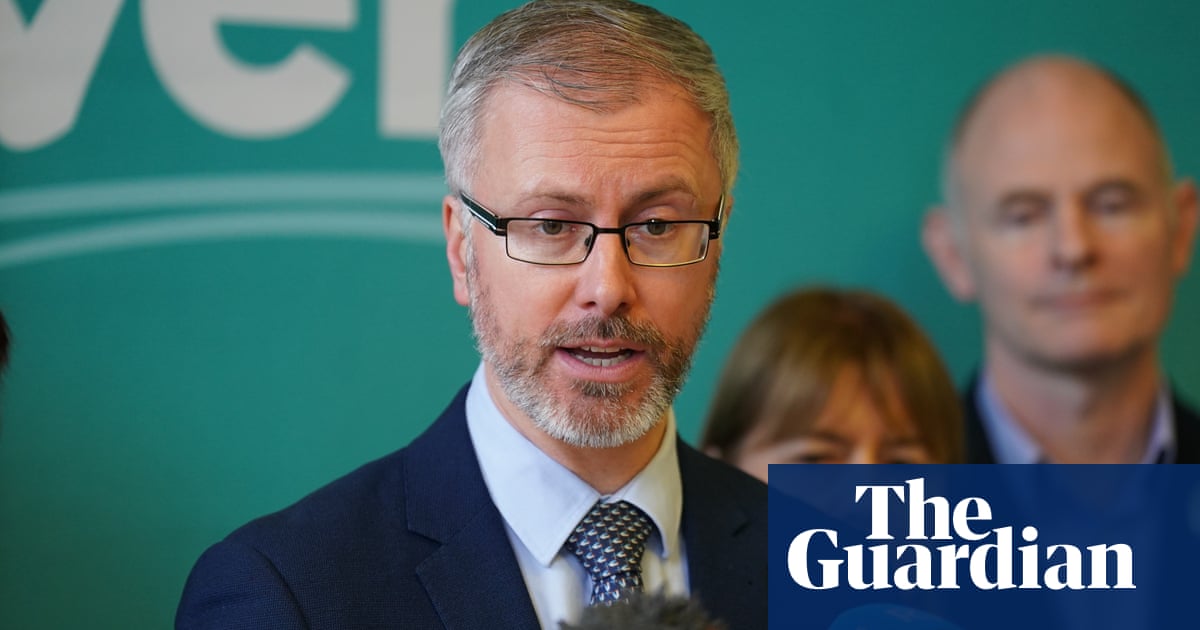The Green party in Ireland is facing virtual wipeout in the general election, with its leader admitting it was entering a period of “rebuild” after the electorate removed any prospect of the party reentering government.
The Greens look set to lose all but one of their 12 seats, that of Roderic O’Gorman, who took over as leader in July. That would mean they will not be able to team up again with the two centre-right parties, Fianna Fáil and Fine Gael, which are poised to take the lion’s shares of seats in the 34th Dáil.
Counting from Friday’s election could continue into into Monday. Ireland has a proportional representation system involving multiple counts and too-close-to-call scraps for the final seats in many constituencies.
By lunchtime on Sunday, it appeared that 10 of the Green party candidates had been eliminated from the race. In the constituency of Dublin West, O’Gorman himself remained on tenterhooks in fifth place and hoping for transfer votes.
He told RTE he was a “tiny bit more confident” than he had been on Saturday that he would retain his seat, but admitted it had been a “difficult weekend” for the party.
As things stand, Fianna Fáil looks set to be the largest party in the next parliament, with more than 40 seats, but with Simon Harris’s Fine Gael and the leftwing Sinn Fêin close behind in the mid- to late-30s. The Social Democrats, a nine-year-old party, is shaping up to be the fourth largest force, almost doubling its seats from six to 11 or 12, according to the outgoing co-leader, Róisín Shortall.
Among the issues that muddied the waters for the Greens was a carbon tax on petrol, aimed at discouraging people from consuming carbon-emitting fuel, which was introduced by the previous government but blamed on the Greens.
Ciarán Cuffe, a member of the party for 40 years, and a former MEP, said the Greens had been “the fall guys” and they had paid the price for being incumbents.
“I think small party incumbency is at the heart of this. In the Irish political context, it is always tough for the junior partner in government to argue about what it has achieving in government, and it seems to be held responsible for every other department including the ones it doesn’t control. That’s what happened to Labour in 2016 it happened to us in 2011 and it seems to have happened to us again now,” he said.
“We were seen as the fall guys. We were being attacked from two sides, from some of our core supporters who felt we weren’t doing enough, and then quite a few loud voices within Fianna Fáll and Fine Gael who were saying that the Greens were destroying the country, so we were stuck between a rock and a hard place,” he said.
Both O’Gorman and Cuffe said the political wilderness was familiar territory as they were also wiped out in 2011 when the Fianna Fáil government was routed due to the financial crash and IMF bail out under the recently retired leader Eamon Ryan.
“In some ways it is similar to 2011 when we had no resources and a handful of councillors, and Eamon Ryan went in every day to an empty office and spread the message that the Green voice was hugely important. And we came back in 2014 with quite a few council seats and seats in the Dáil in 2016.
“It is a lonely place when you’ve been wiped or almost wiped out in national elections. But I think the green issues are much bigger than one election, and having been in the Greens since the get go for 40 years, I believe the Greens will certainly rise again, and the issues are more important than ever,” added Cuffe.
He added that the maths was against them as often voters gave the Greens the second or third choice but they needed the No 1 spot on the ballot paper.
Shorthall said she was delighted the Social Democrats, who she co-founded nine years ago, was “maturing” in the eyes of the public.
“We are a strong force now in the Irish political scene. Lots of people didn’t see that happening … that we could fizzle out, and we haven’t done that, “ she said.

